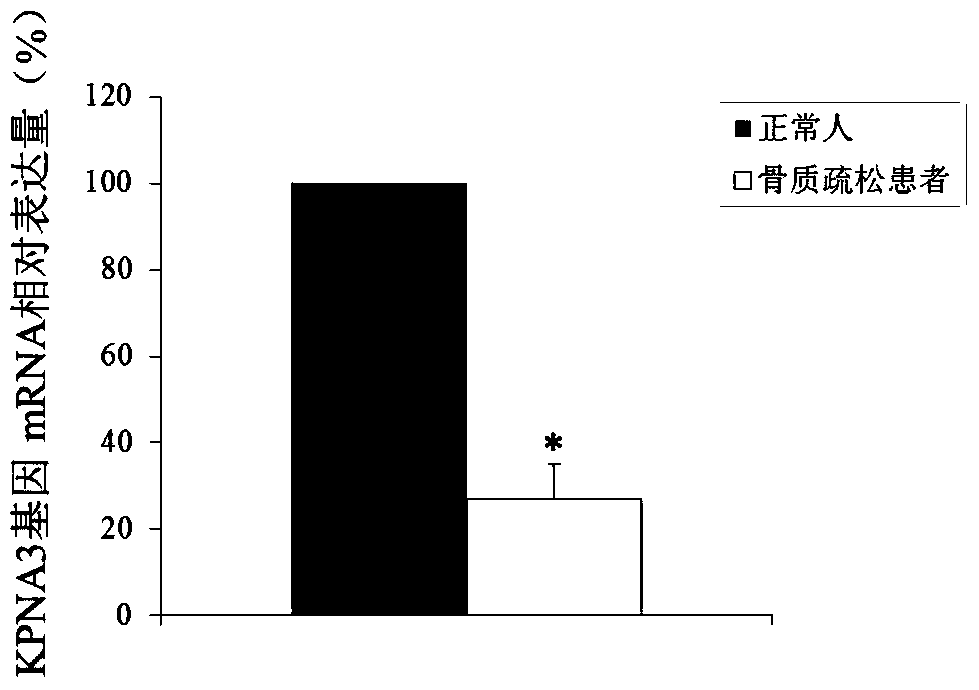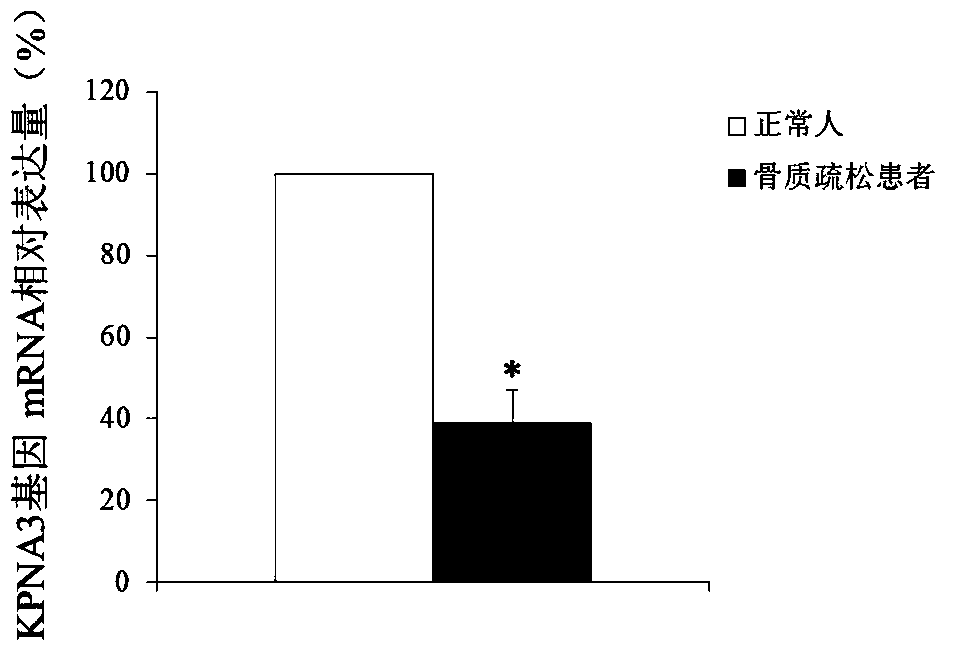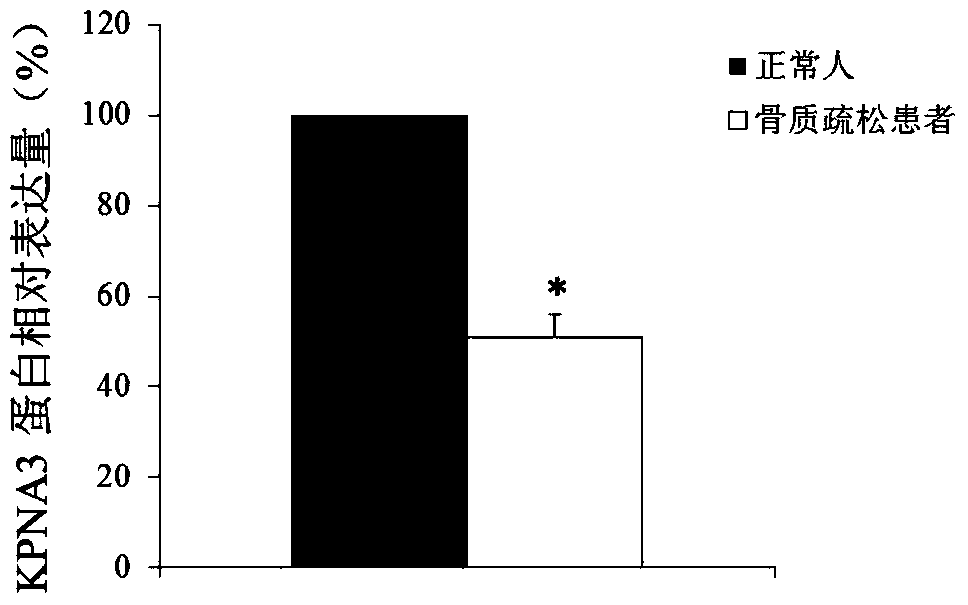A molecular marker for diagnosis and treatment of osteoporosis
An osteoporosis, one-to-one technology, applied in the field of diagnosis and treatment of KPNA3 gene in osteoporosis, can solve problems such as inability to give reliable judgments
- Summary
- Abstract
- Description
- Claims
- Application Information
AI Technical Summary
Problems solved by technology
Method used
Image
Examples
Embodiment 1
[0062] Example 1 Screening of differentially expressed genes related to osteoporosis
[0063] 1. Research objects:
[0064] Randomly select patients who are about to undergo marrow joint replacement and test their bone density. Select 8 patients with osteoporosis and 8 patients with normal bone density control group (traumatic fractures, no osteoporosis tested), aged 52-68 years. Questionnaire surveys the subjects’ lifestyle and health status.
[0065] Inclusion criteria for patients with osteoporosis: (1) Those who meet the diagnostic criteria for osteoporosis, refer to the "Chinese Osteoporosis Recommended Diagnostic Criteria (Second Draft); (2) All patients have informed consent.
[0066] Exclusion criteria for patients with osteoporosis: those with secondary osteoporosis.
[0067] 2. Obtaining RNA from bone tissue
[0068] From the human femoral head removed from the marrow joint replacement, 1g of hard bone was taken and quickly stored in liquid nitrogen. Trizol one-step method wa...
Embodiment 2
[0082] Example 2 QPCR experiment to verify the differential expression of KPNA3 gene
[0083] 1. Research objects: randomly selected patients about to undergo marrow joint replacement surgery, tested bone density, selected 50 patients with osteoporosis, normal bone density control group (traumatic fracture, no osteoporosis detected) 40 patients, age 50-70 years old. The inclusion criteria and exclusion criteria were the same as in Example 1.
[0084] 2. Extraction of RNA from bone tissue
[0085] The steps are the same as in Example 1.
[0086] 3. Reverse transcription
[0087] Use reverse transcription buffer to reverse transcribe 1 μg of total RNA to synthesize cDNA. A 25 μl reaction system was used, and 1 μg total RNA was used as template RNA for each sample. The following components were added to the PCR tube: DEPC water, 5× reverse transcription buffer, 10 mmol / L dNTP, 0.1 mmol / l DTT, 30 μmmol / l Oligo dT, 200 U / μl M-MLV, template RNA. Incubate at 42°C for 1 h, 72°C for 10 min,...
Embodiment 3
[0092] Example 3 Differential expression of KPNA3 protein in osteoblasts
[0093] 1. Research object Same as Example 2.
[0094] 2. Collection and culture of human osteoblasts
[0095] Cancellous bone is taken from the human femoral head removed from the arthroplasty, soft tissue is removed, and the bone is repeatedly washed with normal saline. After the washing solution is clear, rinse with PBS solution and shake 3 times, cut into 1mm3 fragments, and adopt enzyme digestion method Isolate and purify osteoblasts. Inoculate it in a 30ml culture flask (add appropriate amount of DMEM-F12 (1:1) medium and 10% fetal bovine serum to the culture flask), and place it in a 37°C, 5% CO2 constant temperature incubator. Change the medium after 2 days and remove the non-adherent cells, then change the medium once every 3 days and observe under an inverted microscope. After the primary cells were fused into a monolayer, they were digested and passaged with 2.5 g / L trypsin.
[0096] 3. Extraction ...
PUM
 Login to View More
Login to View More Abstract
Description
Claims
Application Information
 Login to View More
Login to View More - R&D
- Intellectual Property
- Life Sciences
- Materials
- Tech Scout
- Unparalleled Data Quality
- Higher Quality Content
- 60% Fewer Hallucinations
Browse by: Latest US Patents, China's latest patents, Technical Efficacy Thesaurus, Application Domain, Technology Topic, Popular Technical Reports.
© 2025 PatSnap. All rights reserved.Legal|Privacy policy|Modern Slavery Act Transparency Statement|Sitemap|About US| Contact US: help@patsnap.com



